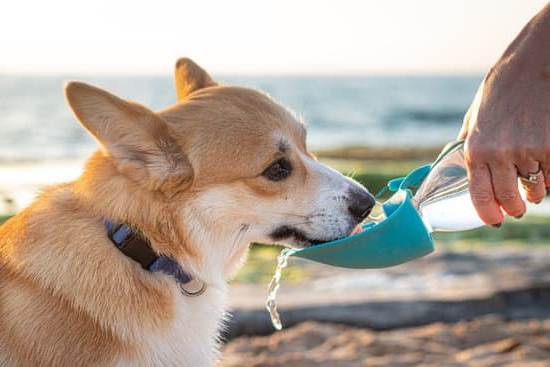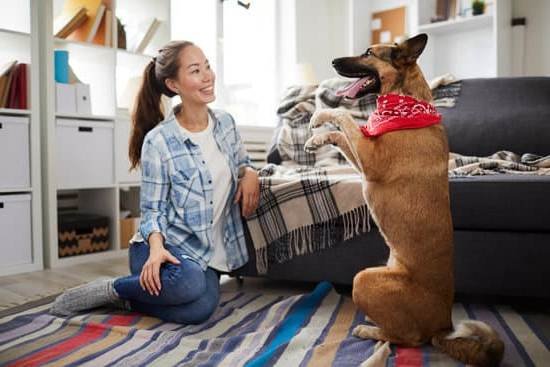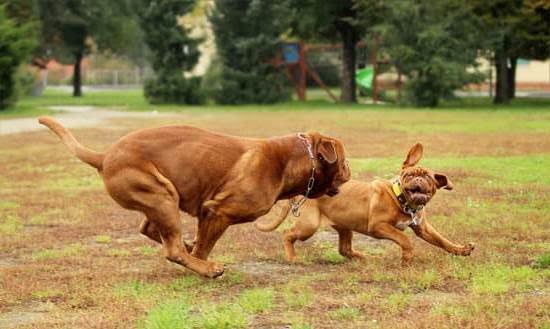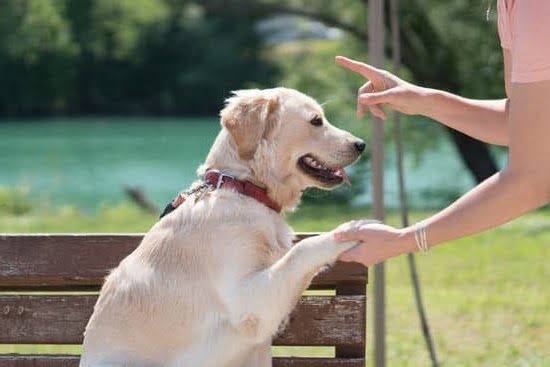Leash training a big dog is essential to ensure safety and control while out for walks. In this article, we will delve into the comprehensive guide on how to train a big dog to walk on a leash effectively. Whether you have a new puppy or an adult dog, mastering leash training is crucial for both their well-being and your peace of mind.
Big dogs possess tremendous strength and energy, which can make walking them on a leash challenging. Understanding the unique challenges that come with handling a large breed can help you tailor your training approach accordingly. From choosing the right equipment to addressing behavior issues, we will cover all aspects of leash training for big dogs to set you and your furry friend up for success.
As you embark on this journey of leash training your big dog, we will provide tips and techniques for teaching them how to walk politely on a leash. Patience and consistency are key in this process, along with troubleshooting common difficulties that may arise along the way. By following our expert guidance, you can celebrate milestones and successes in your big dog’s leash training journey, strengthening the bond between you and your loyal companion.
Understanding the Unique Challenges of Walking a Big Dog on a Leash
Big dogs come with their own set of unique challenges when it comes to leash training. These challenges can range from their size and strength to their tendencies to pull or wander off track.
It’s essential to understand these challenges in order to effectively train your big dog to walk on a leash. One of the key aspects is the physical strength of a bigger dog – they can easily overpower you if not properly trained, which is why leash training is crucial for both your safety and theirs.
When learning how to train a big dog to walk on a leash, it’s important to consider their natural instincts and behaviors. Big dogs may have a higher prey drive or be easily distracted by noises and scents in the environment, making it more challenging to maintain their focus during walks.
Additionally, some large breeds have a tendency to exhibit stubborn behavior, requiring patience and consistency during the training process. Understanding these unique challenges will help you tailor your training methods to suit your big dog’s needs.
To address the challenges of walking a big dog on a leash, it’s crucial to use appropriate equipment that can handle their size and strength. Choosing a sturdy leash and collar designed for larger breeds will provide better control and prevent any potential accidents or escape attempts.
Additionally, utilizing positive reinforcement techniques such as treats or verbal praise can help motivate your big dog during training sessions. By understanding these challenges and using effective training methods, you can successfully teach your big dog how to walk politely on a leash.
| Big Dog Leash Training Challenges | Effective Training Methods |
|---|---|
| Size and Strength | Use appropriate equipment and positive reinforcement |
| Natural Instincts | Understand behaviors and tailor training methods |
| Stubbornness | Practice patience and consistency during training |
Choosing the Right Leash and Collar for Your Big Dog
When it comes to training a big dog to walk on a leash, selecting the appropriate leash and collar is crucial for both the comfort and safety of your canine companion. Big dogs require strong and durable leashes that can withstand their strength and size.
A good choice is a sturdy nylon or leather leash that is at least 6 feet long to provide them with enough space to move around while still under your control. Avoid retractable leashes as they can be challenging to manage when training a big dog.
In addition to the leash, choosing the right collar for your big dog is essential. For larger breeds, a flat collar or martingale collar may be more suitable compared to choke chains or prong collars which can cause discomfort and even injury.
Make sure the collar fits properly – you should be able to fit two fingers comfortably between the collar and your dog’s neck. Properly fitted collars ensure both control over your dog during walks and prevent them from slipping out of it unexpectedly.
Training a big dog to walk on leash starts from providing them with the right equipment that fits well and does not cause any discomfort. By selecting high-quality leashes and collars that are appropriate for your big dog’s size and breed, you set the foundation for successful leash training sessions. Remember, safety always comes first when choosing the gear for walking your big furry friend.
| Leash Training Equipment | Importance |
|---|---|
| Nylon or leather leash | Durable material for large dogs |
| Flat or martingale collar | Suitable choices for comfort & control |
| Proper fit of collar | Prevents discomfort & ensures safety during walks |
Introducing Your Big Dog to Wearing a Leash and Collar
Before you can start teaching your big dog how to walk on a leash, it’s important to introduce them to wearing a leash and collar. This step is crucial in getting your dog comfortable with the equipment and setting the stage for successful leash training.
Start by allowing your big dog to sniff and investigate the leash and collar before putting them on. You can even associate the gear with positive experiences by giving treats or praise during this process.
Once your big dog is familiar with the leash and collar, it’s time to gently put them on. Make sure that the collar fits properly – not too tight that it chokes them, but snug enough that they can’t slip out of it.
Allow your big dog some time to adjust to wearing the leash and collar indoors before heading outside for a walk. Encourage them with treats and praise while they have their gear on to create positive associations.
If your big dog seems uncomfortable or resistant to wearing the leash and collar, take it slow and be patient. Offer plenty of reassurance and rewards for good behavior. Remember that each dog is different, so it may take some time for them to get used to these new accessories. By introducing your big dog gradually and positively to wearing a leash and collar, you’ll set a solid foundation for successful leash training in the future.
Techniques for Teaching Your Big Dog to Walk Politely on a Leash
Big dogs can be a handful when it comes to leash training, but with the right techniques and consistency, you can help your large furry friend walk politely on a leash. Here are some effective strategies on how to train a big dog to walk on a leash:
- Start by ensuring that your big dog is calm and focused before beginning the training session. A tired dog is more likely to be receptive to learning, so consider taking them for a short walk or engaging in some playtime to expel excess energy.
- Use positive reinforcement such as treats, praise, or toys to reward your big dog for good behavior while walking on a leash. This will help them associate walking politely with positive experiences and encourage them to repeat the desired behavior.
- Practice loose-leash walking by teaching your big dog to walk beside you without pulling on the leash. Start in a quiet environment with minimal distractions before gradually introducing more challenging settings.
It’s important to remember that consistency is key when teaching your big dog how to walk on a leash. Establish clear rules and boundaries during training sessions, and be patient as your furry companion learns this new skill. With time and dedication, you’ll soon be able to enjoy peaceful walks with your well-behaved big dog by your side.
Dealing With Common Behavior Issues While Leash Training a Big Dog
Training a big dog to walk on a leash can come with its own set of challenges, especially when it comes to dealing with common behavior issues that may arise during the training process. It is important to address these behavior issues effectively in order to ensure a successful leash training experience for both you and your furry companion.
Here are some common behavior issues you may encounter while leash training your big dog, along with strategies on how to handle them:
1. Pulling on the Leash: Many big dogs have a tendency to pull on the leash, making walks frustrating and difficult. To address this issue, consider using a no-pull harness or head collar that provides more control over your dog’s movements. Practice loose leash walking techniques by stopping whenever your dog pulls and rewarding them when they walk nicely by your side.
2. Reactivity Towards Other Dogs or People: Some big dogs may exhibit reactive behavior towards other dogs or people while on walks. It is essential to desensitize your dog to their triggers through positive reinforcement training techniques. Create distance from the trigger and reward calm behavior, gradually decreasing the distance over time as your dog becomes more comfortable.
3. Distractions and Excitability: Big dogs can easily get distracted by their surroundings or become overly excited during walks, leading to unruly behavior on the leash. Use high-value treats or toys to redirect your dog’s attention back to you when they become distracted. Incorporate obedience commands like “sit” or “watch me” to regain focus before continuing the walk.
By addressing these common behavior issues effectively and consistently while leash training your big dog, you can create an enjoyable and safe walking experience for both you and your furry friend. Remember that patience, consistency, and positive reinforcement are key in overcoming these challenges and building a strong bond with your big dog during leash training sessions.
Tips for Staying Consistent and Patient During Leash Training
Leash training a big dog can be challenging, but consistency and patience are key to success. It’s important to remember that every dog is different and may require varying amounts of time and effort to master walking on a leash. Here are some tips for staying consistent and patient during the leash training process.
Set a Routine
Consistency is crucial when leash training your big dog. Establish a daily routine for walks, ensuring that you designate specific times for training sessions. Dogs thrive on routine, so sticking to a schedule can help them learn what is expected of them during leash walks.
Use Positive Reinforcement
Positive reinforcement is an effective way to encourage good behavior in dogs. When your big dog walks politely on the leash, reward them with treats, praise, or playtime. This will help reinforce their good behavior and make leash training a positive experience for both you and your furry companion.
Be Patient
Training takes time, especially when working with a big dog. It’s important to be patient and understanding throughout the process. Avoid getting frustrated if your dog doesn’t immediately grasp leash walking; instead, remain calm and consistent in your training efforts. Remember that every small step forward is progress towards successfully training your big dog to walk on a leash.
Understanding the Benefits of Leash Training for Both You and Your Big Dog
Leash training for big dogs is an essential aspect of responsible pet ownership. Not only does it ensure the safety of your big dog and those around them, but it also fosters a stronger bond between you and your furry companion. Understanding the benefits of leash training for both you and your big dog can motivate you to commit to the training process.
Improved Safety
One of the primary benefits of leash training for big dogs is safety. A well-trained dog that walks politely on a leash is less likely to bolt into traffic, chase after other animals, or approach potentially dangerous situations. This not only protects your big dog from harm but also prevents accidents that could put others in danger.
Bonding and Communication
Leash training provides an excellent opportunity for bonding and communication between you and your big dog. Through consistent training sessions, you are able to establish trust, respect, and clear communication with your furry friend. When your big dog learns to walk nicely on a leash, it demonstrates their willingness to follow your lead and strengthens the bond between you.
Improved Quality of Life
Lastly, leash training can significantly improve the overall quality of life for both you and your big dog. By teaching them proper walking etiquette, you can enjoy more pleasant walks together without the frustration of pulling or erratic behavior.
Additionally, a well-trained dog is more welcome in public spaces, allowing you to include them in more activities and adventures. Ultimately, investing time and effort into leash training will bring numerous benefits that enhance the relationship between you and your beloved big dog.
Troubleshooting Difficult Situations During Leash Training
When training a big dog to walk on a leash, it is important to anticipate and be prepared for potential challenges that may arise. One common difficulty during leash training is when the dog pulls excessively or lunges while on the leash. This behavior can be frustrating and even dangerous, especially with a large, strong dog.
To address this issue, it is essential to first understand why the dog is exhibiting this behavior. It could be due to excitement, lack of proper training, or even a sign of discomfort.
One effective technique to address pulling or lunging behaviors is to start by teaching your big dog basic obedience commands such as “heel” or “leave it.” By practicing these commands consistently during walks, you can redirect your dog’s focus and reinforce positive behavior while discouraging pulling on the leash. Additionally, using treats or rewards can help motivate your big dog to stay by your side and walk politely on the leash.
Another challenging situation that may occur during leash training is when a big dog becomes fearful or anxious while on a walk. This fear could stem from various factors such as loud noises, unfamiliar surroundings, or past negative experiences. In such cases, it is crucial to remain calm and patient with your furry companion.
Gradually expose your big dog to new environments and stimuli while providing reassurance and positive reinforcement. Seeking the guidance of a professional trainer or behavioral specialist can also be beneficial in addressing fear-based reactions during leash training sessions.
By being proactive in troubleshooting difficult situations during leash training, you can better support your big dog in learning appropriate leash manners and enjoying walks together. Remember that every dog is unique, so patience, consistency, and understanding are key elements in successfully overcoming challenges along the way. With dedication and positive reinforcement, you can help your big furry friend become a well-behaved walking buddy who happily follows you on adventures outdoors.
Celebrating Milestones and Successes in Leash Training Your Big Dog
Leash training a big dog can be a challenging but rewarding process. Celebrating milestones and successes along the way is crucial to reinforcing positive behaviors and strengthening the bond between you and your furry companion. Each small victory, whether it’s successfully walking a few steps without pulling or calmly passing by another dog, should be acknowledged and praised.
One of the key aspects of celebrating milestones in leash training is recognizing progress, no matter how small. It’s essential to focus on the improvements your big dog has made, rather than solely on any setbacks or challenges you may face during the training process. By highlighting these achievements, you are not only reinforcing good behavior but also boosting your dog’s confidence and motivation to continue learning.
Additionally, make sure to celebrate each milestone in a way that is meaningful to your big dog. This could be through verbal praise, treats, toys, or extra playtime. Finding what motivates your furry friend will make the celebration more effective and enjoyable for both of you. Remember that every step forward in leash training is a step toward creating a harmonious relationship with your big dog while ensuring their safety and well-being during walks.
Frequently Asked Questions
How Do You Train a Strong Dog to Walk on a Leash?
Training a strong dog to walk on a leash requires patience, consistency, and positive reinforcement. Start by getting your dog comfortable with wearing the leash and collar. Use treats to reward good behavior and practice walking on a loose leash in a quiet area before progressing to busier environments.
How Do You Stop a Large Dog From Pulling on the Leash?
To stop a large dog from pulling on the leash, it’s important to teach them proper leash manners. Avoid giving in to the pulling as this reinforces the behavior. Use training tools like front-clip harnesses or head halters to redirect their attention back to you. Consistent training and rewarding desired behavior will help break the habit of pulling.
How Do You Control a Big Dog on a Walk?
Controlling a big dog on a walk involves establishing yourself as the pack leader through consistent training and clear communication. Use commands like “heel” or “stay” to maintain control during walks. Keep your dog’s focus on you by rewarding good behavior and addressing any distractions promptly. Stay calm and assertive to effectively manage your big dog while walking.

Welcome to the blog! I am a professional dog trainer and have been working with dogs for many years. In this blog, I will be discussing various topics related to dog training, including tips, tricks, and advice. I hope you find this information helpful and informative. Thanks for reading!





